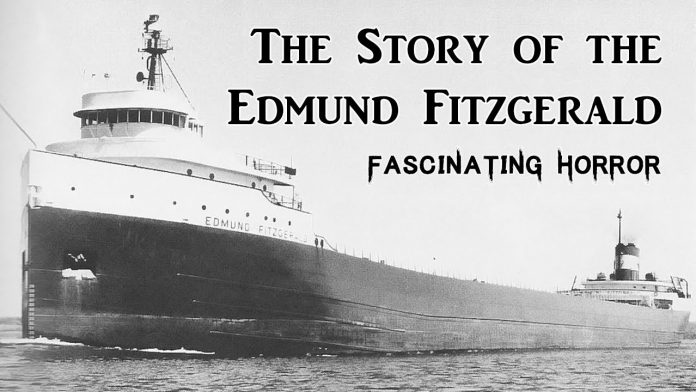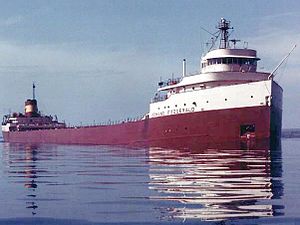The SS Edmund Fitzgerald, often remembered through Gordon Lightfoot’s haunting ballad, “The Wreck of the Edmund Fitzgerald,” encapsulates a tragic chapter in maritime history. The ship’s sinking on Lake Superior during a furious storm on November 10, 1975, not only took the lives of 29 crew members but also underscored the perilous nature of Great Lakes shipping.
The Edmund Fitzgerald’s legacy began auspiciously. Commissioned in 1957 by the Northwestern Mutual Life Insurance Company, the vessel was then the largest ship destined for the Great Lakes, measuring 729 feet long and weighing over 13,600 tons. It was christened on June 8, 1958, bearing the name of the firm’s president, Edmund Fitzgerald, and embarked on its maiden voyage on September 24, 1958. The freighter, affectionately dubbed “the Big Fitz” or “the Mighty Fitz,” swiftly gained popularity among boat enthusiasts. Primarily, it carried taconite pellets, a type of iron ore, across the Great Lakes, contributing to the region’s bustling iron and steel industry1.
The fateful final voyage of the Edmund Fitzgerald commenced on November 9, 1975, from Superior, Wisconsin, under the command of Captain Ernest M. McSorley. The vessel was laden with 26,116 long tons of taconite pellets, destined for a steel mill near Detroit, Michigan. However, the promising voyage was tragically cut short by a severe storm that brewed over southern Lake Superior. The storm’s ferocity escalated, with winds howling at 70-75 knots and waves towering to 25 feet. Amidst the tempest, the Edmund Fitzgerald reported minor damage and loss of radar. The last transmission from Captain McSorley was, “We are holding our own.” Shortly thereafter, the ship vanished from radar screens, succumbing to the raging elements12.
The aftermath spurred a rigorous search and rescue operation led by the US Coast Guard. The Arthur M. Anderson, which had been in communication with the Fitzgerald, retraced its route in a bid to locate the missing freighter. The search extended to other vessels, helicopters, and airplanes, but only debris like lifeboats and life jackets were found initially. However, a week later, sonar detected two large objects near the last known location of the Fitzgerald. The wreck was definitively identified in May 1976, when a submersible robot captured images of the sunken vessel, lying 530 feet below the lake’s surface. The Edmund Fitzgerald was found in two large pieces, separated by a debris field, 17 miles from Whitefish Bay in Canadian waters13.
The legacy of the Edmund Fitzgerald continues to be a focal point in Great Lakes shipping history, with its tale resonating through songs, articles, and maritime lore. The tragic loss also sparked discussions and revisions in shipping regulations to enhance the safety of vessels braving the turbulent waters of the Great Lakes.





